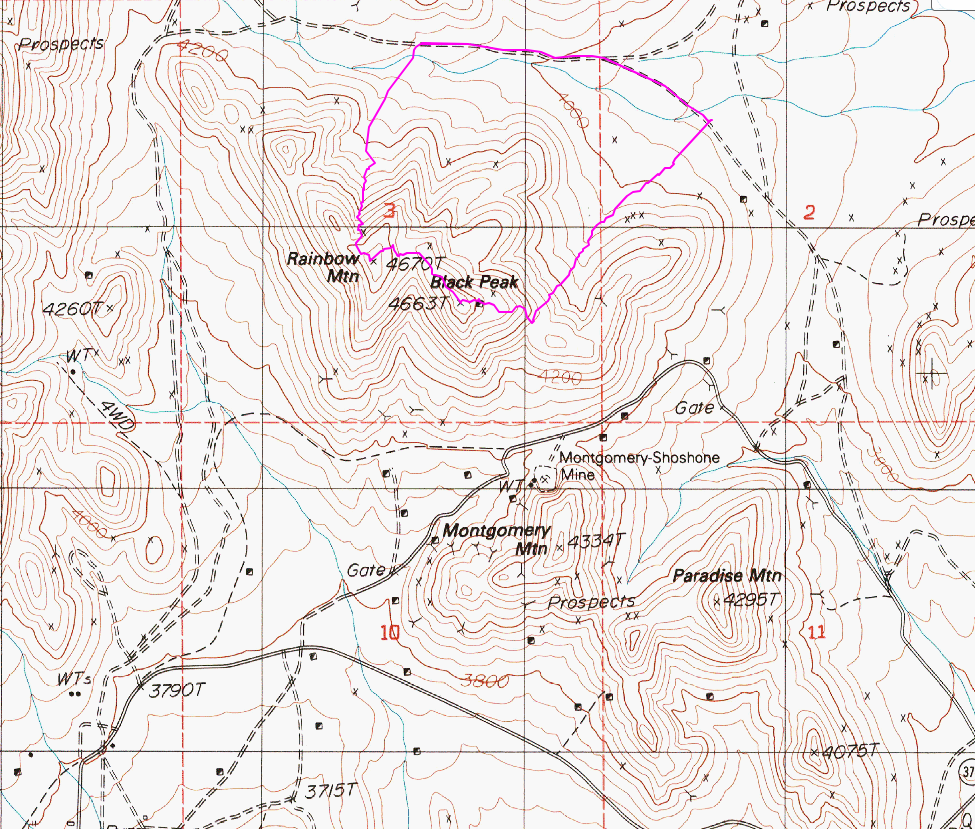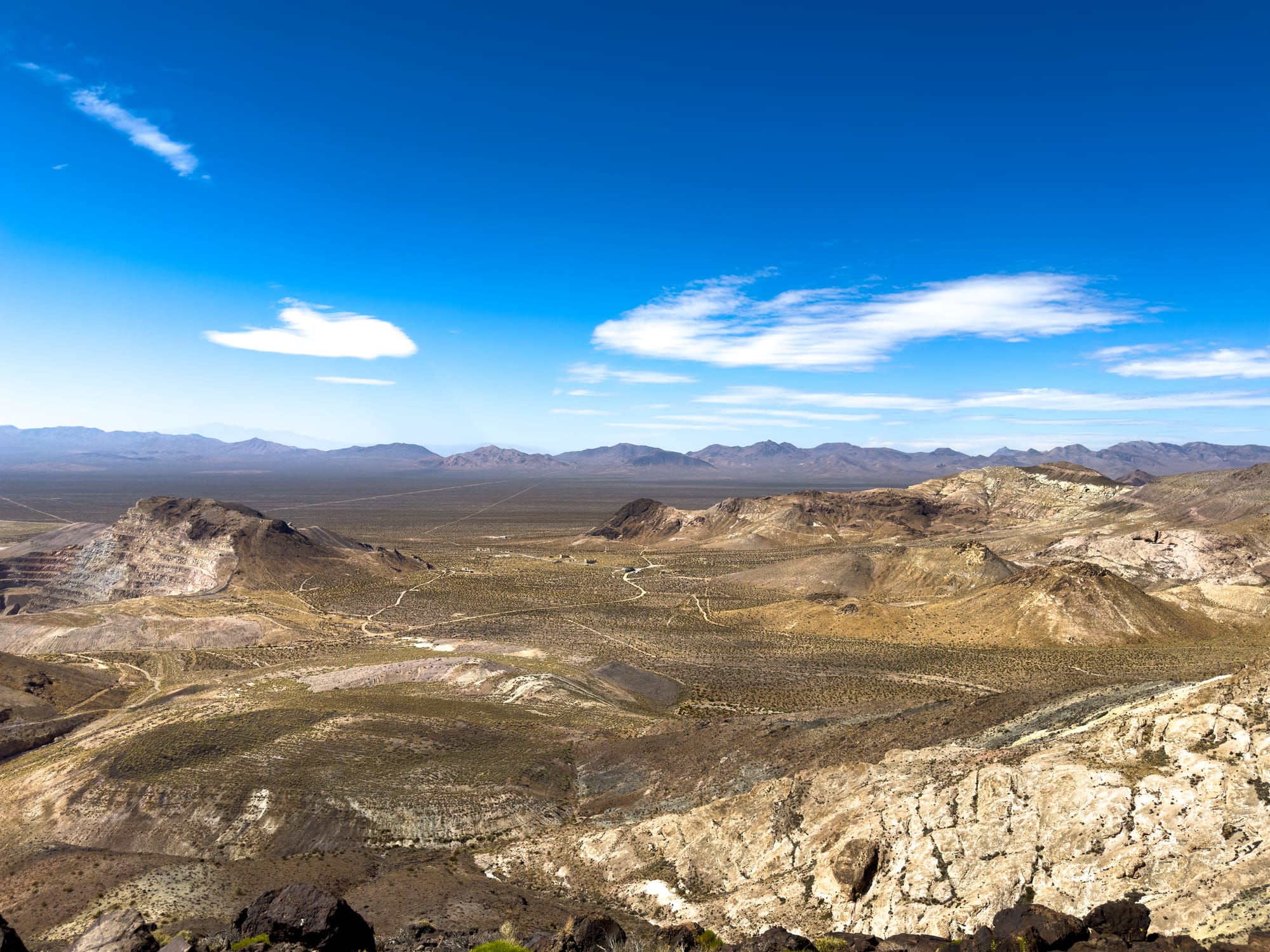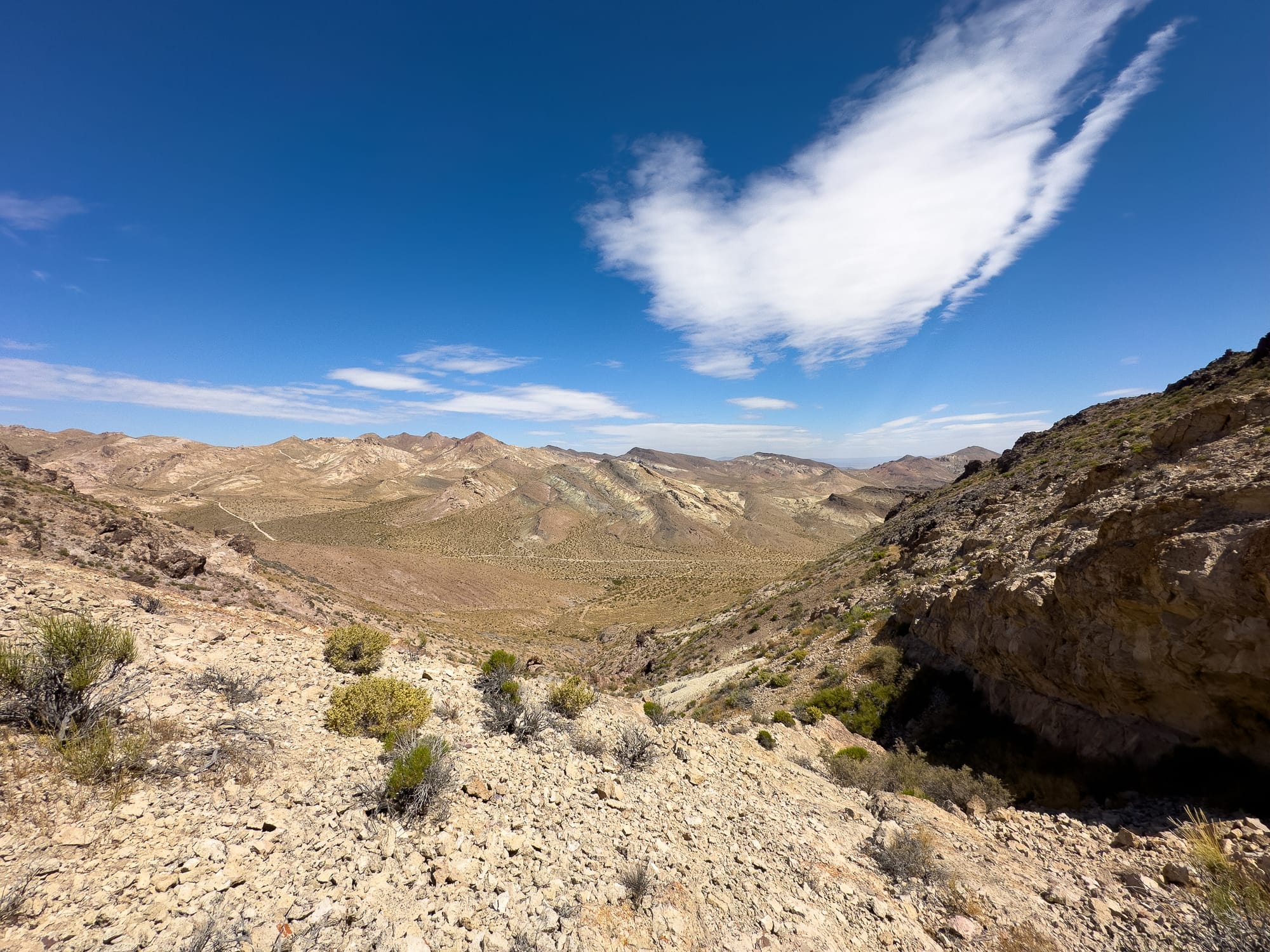Black Peak and Rainbow Mountain, Beatty, Nevada

On this hike, we hit Black Peak and Rainbow Mountain which overlook the ghost town of Rhyolite, Nevada. Rhyolite, located near the eastern edge of Death Valley, emerged as one of Nevada's most famous ghost towns during the early 20th century. Founded in 1904, Rhyolite quickly grew during the gold rush, spurred by the discovery of rich ore in the surrounding Bullfrog Hills. Climbing Black Peak and Rainbow Mountain offers expansive views of the two large open pits of the Montgomery-Shoshone Mine and the Bullfrog Mine on Ladd Mountain.
The Montgomery-Shoshone Mine
The Montgomery-Shoshone Mine was the crown jewel of Rhyolite. Discovered in 1904 by Shorty Harris and E.L. Cross, the mine's initial claims were modest. However, the true potential of the site became evident when Bob Montgomery and Charles M. Schwab, a wealthy industrialist, took control of the operation.
Montgomery and his partners realized that the Montgomery-Shoshone Mine held significant quantities of gold. They developed it into one of the most profitable mines in the region. Schwab invested heavily in the mine's infrastructure, bringing in advanced equipment and building a large mill capable of processing 300 tons of ore daily. The mine's success drew thousands to Rhyolite, which quickly grew into a bustling town complete with electricity, water mains, and even a stock exchange.
The modern Montgomery-Shoshone open pit mine, situated near the historic site of the original Montgomery-Shoshone Mine in the Bullfrog Mining District, represents a continuation of the area's rich mining legacy into the late 20th century. Operated primarily during the 1980s and 1990s, the modern incarnation of the mine was part of a broader resurgence in gold mining activity in the region, driven by advancements in extraction technology and renewed interest in Nevada's mineral resources. Utilizing open-pit mining techniques, this operation focused on extracting lower-grade ore that had been overlooked or deemed uneconomical during the earlier mining booms. The use of heap leaching—a process that involves stacking crushed ore and applying chemicals to extract gold—enabled the mine to recover significant quantities of gold from the remaining ore bodies. Although the modern Montgomery-Shoshone Mine did not achieve the same fame as its early 20th-century predecessor, it played a vital role in the regional economy until its closure, leaving behind a legacy of innovation and adaptation in the face of changing market conditions.
The Barrick Bullfrog Mine
The modern Bullfrog Mine, situated on Ladd Mountain near Beatty, Nevada, is a significant site within the history of contemporary mining in the Bullfrog Mining District. Unlike the early 20th-century operations, this modern mine was developed in the 1980s during a period of renewed interest in gold mining. The mine was operated by Barrick Gold Corporation, one of the world's largest gold mining companies, which recognized the potential of the area's remaining ore deposits.
The Bullfrog Mine primarily focused on open-pit mining techniques, which allowed for the extraction of lower-grade ore on a larger scale than was feasible in the early 1900s. Modern technology and advancements in mining processes, such as heap leaching, made it possible to economically extract gold from ore that earlier prospectors would have considered unprofitable. This shift in approach led to the mine becoming one of the more productive operations in the Bullfrog Mining District during the late 20th century.
At its peak, the Bullfrog Mine produced several hundred thousand ounces of gold, contributing significantly to the local economy and providing employment in the region. However, like many modern mining operations, it faced challenges related to the depletion of ore, fluctuating gold prices, and the environmental impact of mining activities. The mine eventually ceased operations in 1999, after producing an estimated 2.3 million ounces of gold over its lifespan.
Today, the site of the modern Bullfrog Mine remains a point of interest for those studying the history of mining in Nevada. Reclamation efforts have been undertaken to mitigate the environmental impact of the mine, including the recontouring of the land and the treatment of residual contaminants. The legacy of the Bullfrog Mine on Ladd Mountain serves as a reminder of the enduring quest for mineral resources and the evolving nature of mining practices over time.
Rhyolite's Boom and Bust
Rhyolite's rapid rise was mirrored by its equally swift decline. By 1907, the Montgomery-Shoshone Mine had produced over $1.5 million in gold, but the ore quality began to diminish. The Panic of 1907, a nationwide financial crisis, further exacerbated the situation, leading to a drop in gold prices and a reduction in mining profitability.
Despite attempts to sustain operations, the Montgomery-Shoshone Mine closed in 1911, marking the beginning of the end for Rhyolite. The town's population dwindled as miners and businesses left in search of better opportunities. By 1920, Rhyolite was largely abandoned, leaving behind only a few crumbling structures as a testament to its brief but intense boom.











